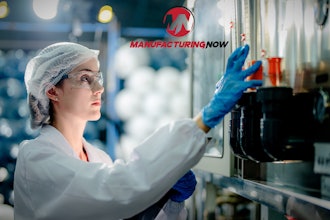Editor's Note: Download the audio version below and click here to subscribe to our newsletter.
This week, Eric Paulin and Eric Shedlarski, co-founders of Cultivation Warehouse, join the Cannabis Equipment News podcast to discuss the competitive commercial cannabis cultivation landscape and how they stand ahead of the pack.
About 20 years ago, Eric Paulin was a hobby grower when he applied to work in a retail hydroponics store. He grew into the role and performed nearly every job at the store until he achieved a management position.
Around the same time, Eric "Shed" Shedlarski owned Santa Cruz Hydroponics, a competitor who bought out Paulin's employer, and they've worked together over since.
Shed has been growing cannabis since college. He opened his first recreational-grow retail shop in a small 800-square-foot store and eventually branched out across the nation. He sold the business five years ago to focus on the commercial side of cannabis. Shed and Eric are the co-founders of Cultivation Warehouse, a company new in name only, as most of the staff have been working together for many years.
The transition to the commercial side of the business happened around 2011 when Shed saw an emerging opportunity as the legal Colorado market came online. He noticed that many commercial grows were still using hobby-level technologies and processes. For example, they weren't using rolling benches, large-scale commercial HVAC systems, horticultural control systems or drip irrigation -- all standard operating procedures now.
He started what may have been the first cannabis controlled-environment agriculture (CEA) department and has chased markets as each new one opens. Cultivation Warehouse has completed some 300 projects, at least one in every state, with recreational or medicinal-use legalization. The company currently has about 60 active projects, working on everything from a craft grow with a few thousand square feet of canopy up to 1 million square feet of total footprint. It's never one size fits all.
The company prefers to start working with new clients right after a license has been acquired, when a facility is being vetted, and before the project enters the engineering phase. The earlier they can get involved, the better, but they work with clients in all aspects of the process.
The partnership entails a significant amount of collaboration, and new facilities typically take 12 to 18 months to design and build, though they have turned them around in six months. The timetable depends on many variables, including who is in charge of the project. For example, it's common to see an architect have a singular vision for a cultivation facility, but they haven't considered pretty standard features, like where to put the HVAC. The longer it takes to design a facility, the higher the burn rate, and it can be tough on upstart businesses.
Cultivation Warehouse stands to streamline the disparate processes, getting clients to market faster while saving money throughout the process. The company recently expanded its service offerings to include complete architectural and mechanical, electrical and plumbing (MEP) engineering services, including design, schematics, equipment specification, procurement, installation and maintenance.
Ideally, Eric and Shed want to work with the director of cultivation through the entire design and equipment specification process. While they can design facilities to best manufacturing processes, if cultivation isn't signing off on decisions, they sometimes make changes that will delay the opening.
According to Shed, he backs up everything with data when specifying equipment. He strives to be product agnostic, designing to need rather than pushing brands. Some of the company's partnerships extend more than 20 years, and that repeat business is built upon helping clients make the best possible product for the lowest possible price.
Breaking down the numbers makes decisions simple for partners that can often be smitten by specific brands that might not be the best fit for the space, particularly in retrofit projects. The company prefers to have frank conversations upfront and a lot of communication during the project, which keeps them from having war stories from projects past. "We don't have any failures yet … not of people who listened," Shed recalls.
However, the market is changing and becoming smarter. Still, most of Cultivation Warehouse's business comes from referrals from former clients and manufacturing partners alike.
And when it comes to equipment manufacturing partners, they are choosy, vetting cost and lead time as well as upfront and operations costs, warranty and support. According to the company, finding the right manufacturing partner is about consistency and accuracy.
Please make sure to like, subscribe and share the podcast. You could also help us out by giving the podcast a positive review. Finally, to email the podcast or suggest a potential guest, you can reach David Mantey at David @cannabisequipmentnews.com.






















